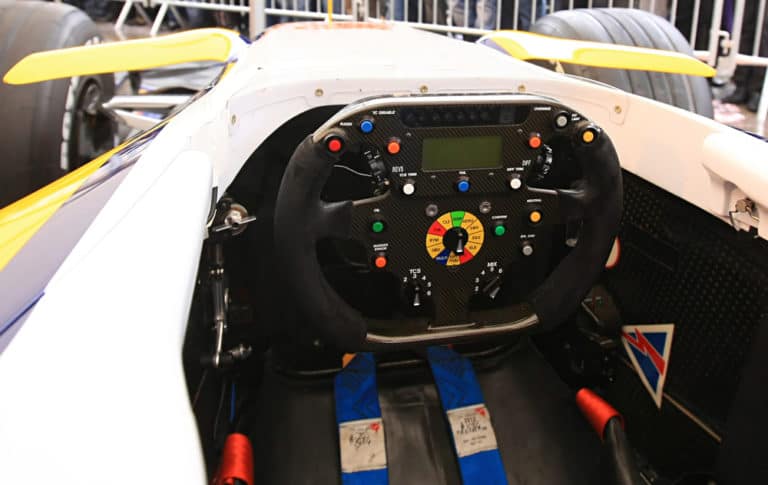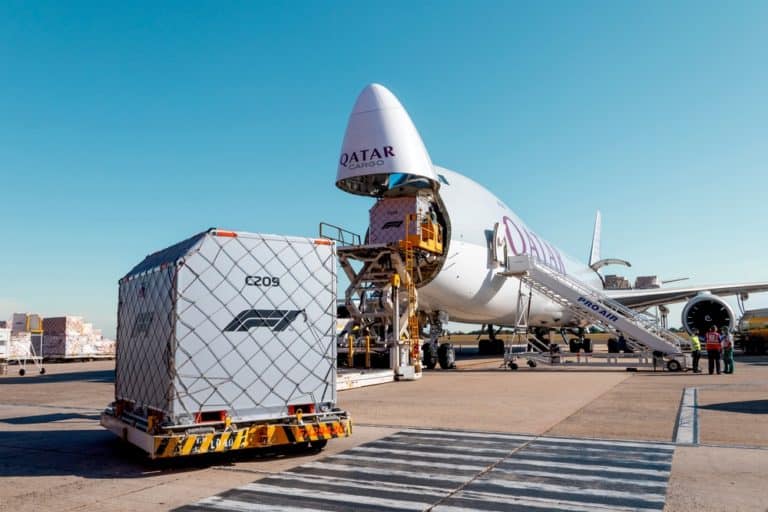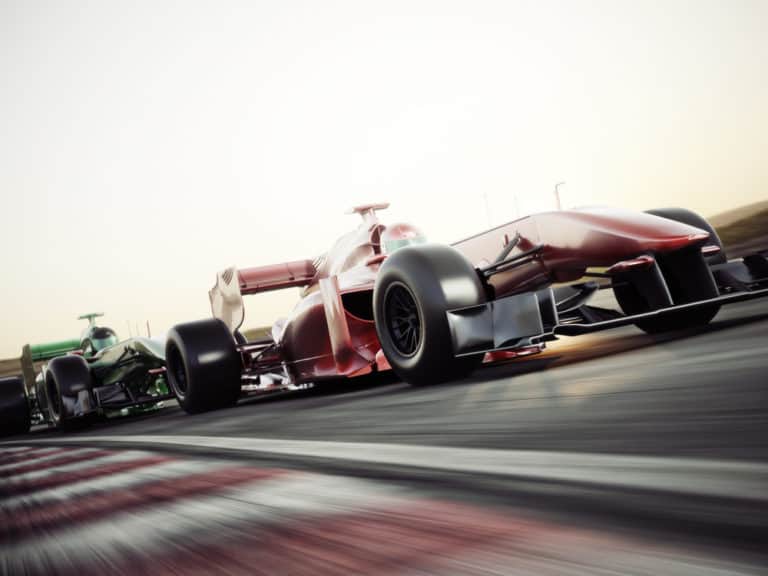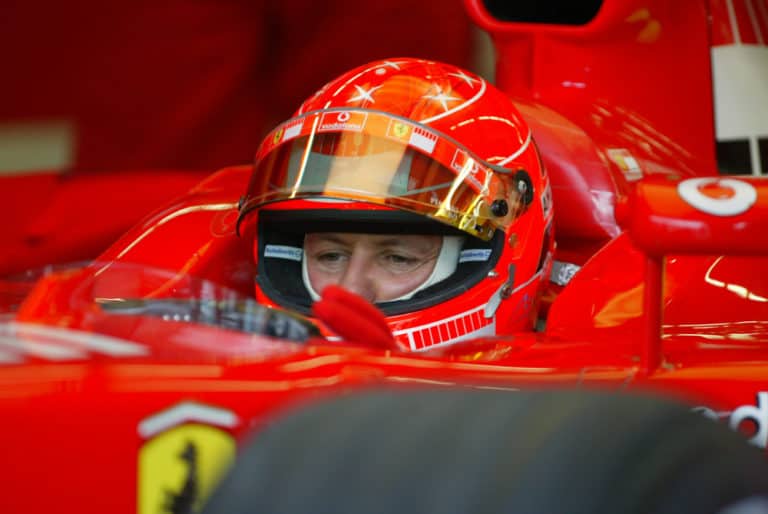F1 tires are put through an incredible amount of stress on a flying lap. They are pushed to their limit, and this can cause them to reach incredibly hot temperatures.
Formula One’s 2021 tires have their optimal performance range of 100-110 degrees Celsius. This is the average temperature range for tires that they reach during a race or qualifying lap. The tremendous amount of friction causes these tires to reach these high temperatures.
However, not all F1 tires reach the same temperatures, and it is interesting how different tires have different optimal temperature ranges.
If you’re looking for some F1 merchandise, check out the awesome stuff at the official F1 store here.
How Hot Do F1 Tires Normally Get?
F1 tires can reach incredibly high temperatures during a race. On average, Formula One tires run somewhere around the 100-110 degree Celsius range during a race. The temperatures can get up to around 150 degrees Celsius as well. These temperatures are the surface temperatures of the tires and are incredibly hot when you consider that the water’s boiling point is 100 degrees Celsius.
These incredibly high temperatures are what the tire is designed for. The tires are designed to work at over 100 degrees Celsius. This means they can reach incredibly hot temperatures during a race, which would burn any human being.
Not all tires tend to reach the same temperatures. It seems to be that the harder tires have higher optimal temperatures. This means that some of the hardest tires over the last few years in Formula One have needed temperatures of around 140 degrees Celsius to work properly. These are some incredibly hot tires and can take a lot of time to get the tires up to temperature.
Why Do Hard Tires Work At Higher Temperatures Than Soft Tires?
A major part of the reason for this is actually in the name. Soft tires are designed to be much softer than hard tires. This also means they are a lot more malleable than the other tires. This means for them to grip properly, they need a lot less temperature than any of the hard tires.
Therefore, the tires are a lot easier to begin a race with because they get up to temperature much quicker than any of the hard tires. The softs are designed to have this element to them, and how they are designed makes them operate at a lower temperature.
Hard tires are a lot stronger and more durable. This means they are a lot less malleable and require a higher temperature to get them to optimal performance. The tires’ hardness means they need more heat to soften them, to make them a lot easier to drive with.
Why Do F1 Tires Get So Hot?
F1 tires can reach incredibly high temperatures. There is a pretty simple reason for this; friction. Firstly, the tires are designed to have an exceptionally high grip, as this is exactly what Formula One cars need to go round corners as quickly as they do.
The higher the grip of tires, the more friction that takes place. The more friction between the tires and the track means the higher the temperature will reach.
The other major reason for the tires getting so hot is that they are put through so much pressure. To put it into context, many Formula One cars go through corners at around 3 or 4 times the speed any typical road car would do.
This means the tires are put through a tremendous amount of pressure. They are being pushed through huge amounts of friction by the car going as quickly as possible, which means the tires continue to heat up.
It is the same thing with breaking. F1 cars can go from 200MPH to 30MPH in seconds, putting the tires through an incredible amount of stress and friction. The more stress and the more friction the tires are put through, the higher temperature that the tires reach.
Friction is also the reason why intermediate and wet tires do not get as hot. The rain means the ground is slippery, which means there is a lot less friction between the track and the tires because of the lubricating characteristics of rain.
It is also why intermediate and wet tires get so hot if they are run in dry conditions. They are both tires designed for wet conditions, so they have a much higher grip. When the conditions are not wet, the tires have too much grip, and too much friction is created. This means that the tires overheat very quickly.
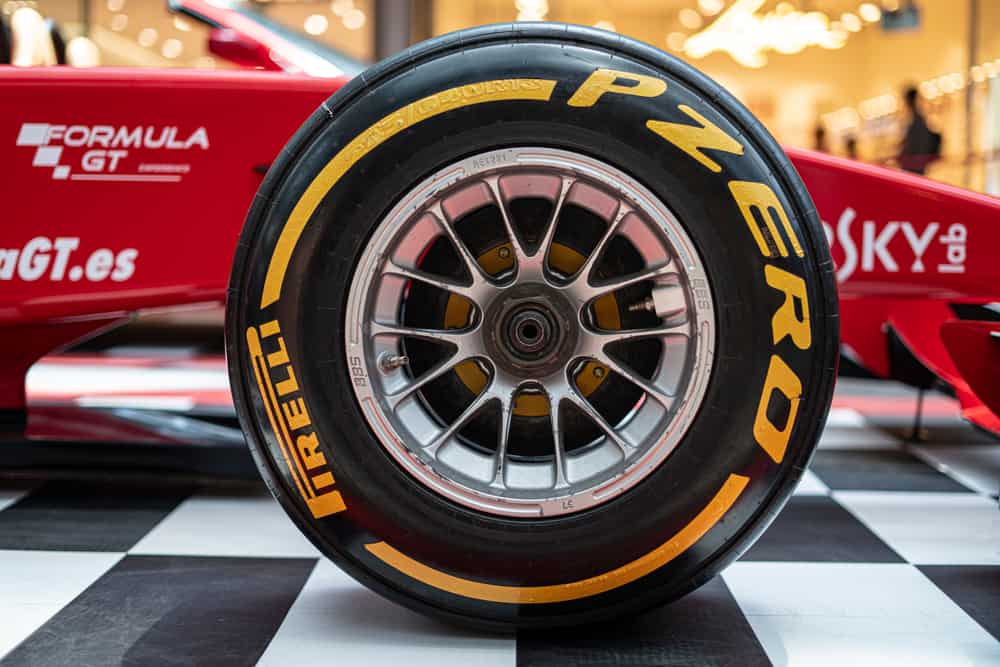
What Happens If F1 Tires Get Too Cold?
To grip properly, tires have to reach their incredibly high optimal temperatures. The tires soften when they reach high temperatures and are therefore able to grip better. However, if the tires are too cold, they do not grip as well. This is because the tires remain too hard and cannot grip as well because they are not being used in their optimal range.
It is the main reason why cars often struggle for grip at the start of races because the tires may not be at optimal temperature and will therefore have reduced grip. It is also why drivers tend to opt for softer tires to start a race, as it is easier to get those tires up to temperature quicker than harder tires, giving the drivers on soft tires the advantage over drivers on hard tires early on in a race.
What Happens If F1 Tires Get Too Hot?
If F1 tires start to overheat, they can wear down a lot quicker. If tires overheat, they will wear down a lot faster because they are very soft and do not have the same durable qualities as operating at optimal temperature.
F1 tires overheating causes more bits of rubber to fall off of the tires as well. It means that the tires can become a lot more inconsistent and reduce the grip massively. Tires need to be in their optimal temperature range to perform to their highest level.
Sources
- https://www.autosport.com/f1/news/pirelli-open-to-widening-f1-tyre-working-range-for-2020-season-4987246/4987246/?nrt=54
- https://www.tribologyabc.com/abc/formula1b.htm#:~:text=A%20racing%20tire%20performs%20optimally,is%20raised%20with%20tire%20heaters.
- https://www.quora.com/How-hot-do-F1-tires-get-during-a-race



